| Title | Koumajou Densetsu II: Stranger’s Requiem |
| Released | Dec 14, 2023 |
| Developer(s): | Frontier Aja |
| Publisher(s): | CFK Co., Ltd. |
| Platform(s): | |
| Genre | Action, Platformer |
| Rating | T |
Completed on PC on Hard difficulty.
HowLongToBeat Time: 2hrs | My Clear Time: 50min
Background
Koumajou Densetsu II: Stranger’s Requiem is a fan-made game developed by Frontier Aja, blending the vibrant world of the Touhou Project with the challenging, methodical gameplay of Castlevania’s “Classicvania” era. Originally released in Japan in 2010, the game remained a hidden gem for over a decade until it received a worldwide remaster on December 14, 2023.
Watch the official trailer for the remastered version below:
Serving as a sequel to the 2009 title Koumajou Densetsu: Scarlet Symphony, the game continues the tradition of reimagining Touhou characters and settings in a gothic, action-packed style.
Starring Sakuya Izayoi as the protagonist, Stranger’s Requiem builds on the foundation laid by its predecessor while introducing new gameplay mechanics, expanded stage designs, and refined visuals. The game also features a talented cast of seiyuu, including some notable names, adding further polish to its presentation and narrative immersion.
Released during an era when fan games were gaining traction in the indie scene, Stranger’s Requiem captured attention for its high production values, attention to detail, and dedication to honoring the source material. The game’s remastered version ensures that a new generation of players can appreciate its polished art, fluid animations, and memorable soundtrack.
The development team for Koumajou Densetsu II: Stranger’s Requiem includes:
- Banpai Akira (Character Designer / Artist)
- Known for Koumajou Densetsu: Scarlet Symphony, The New Gate
- Eiichiro Yanagi (Composer)
- Known for Gun Knight Girl, Akiba’s Trip, Generation XTH
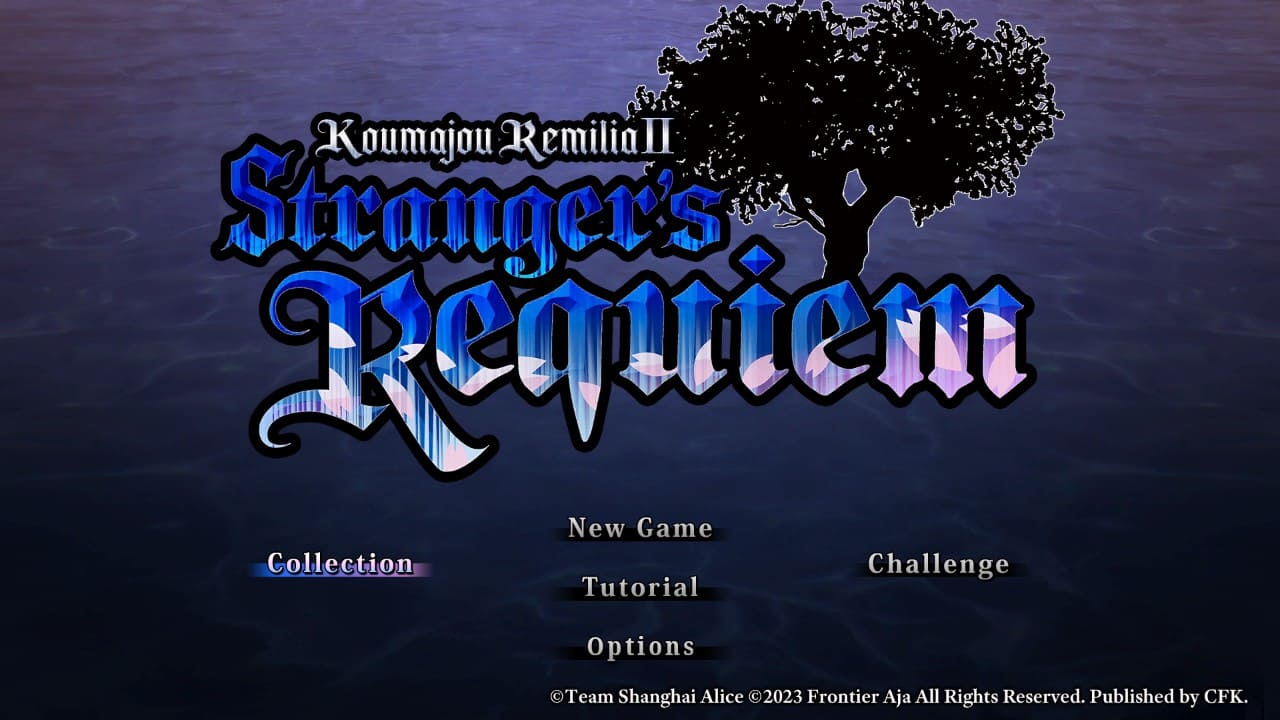
Start your journey with multiple gameplay modes and options
Experience
Before diving into Koumajou Densetsu II: Stranger’s Requiem, I played its predecessor, Koumajou Densetsu: Scarlet Symphony, to fully immerse myself in the series. I also have a long personal history with Castlevania and action platformers as a whole. My journey began with Super Castlevania IV on the SNES, a game I played daily from 4th grade through 6th grade, solidifying my love for the genre.
Ayami Kojima, renowned for her work on the Castlevania series and Dynasty Warriors, is one of my favorite artists of all time. Akira Banpai’s art clearly draws inspiration from Kojima’s style, and he has expressed his flattery when fans compare his work to hers. This connection between the two artists makes Koumajou Densetsu II all the more intriguing to me, as it feels like a love letter to both Touhou and the gothic aesthetic of Castlevania.
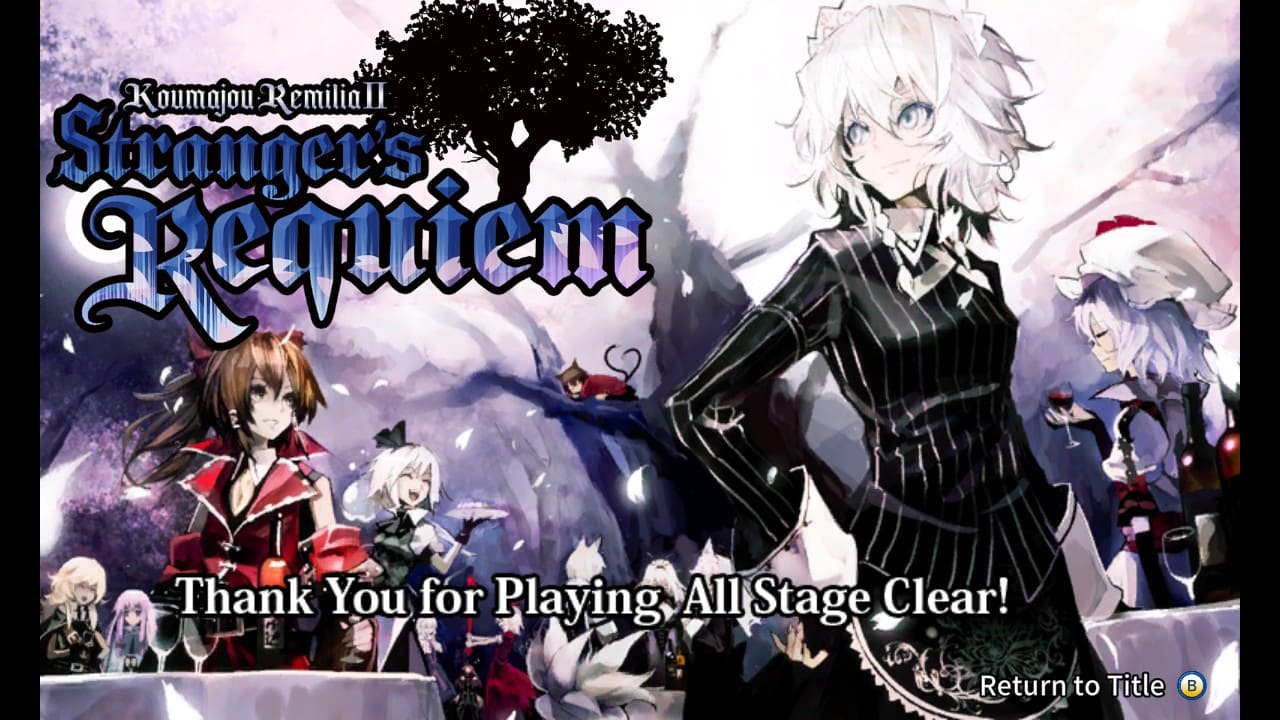
Celebrate your victory with Sakuya, Reimu, and Remilia as Youmu looks on happily in the background.
Impressions
Introduction
Koumajou Remilia II: Stranger’s Requiem is a significant step up from its predecessor, with improvements in both gameplay mechanics and visual presentation. As the game offers a fresh experience on modern hardware, it manages to retain the core appeal of its bullet-hell action platformer roots, while also refining what worked and addressing some of the issues from the first entry.
The game opens with an anime opening followed by Yanagi Eiichirou’s theme, afraid.
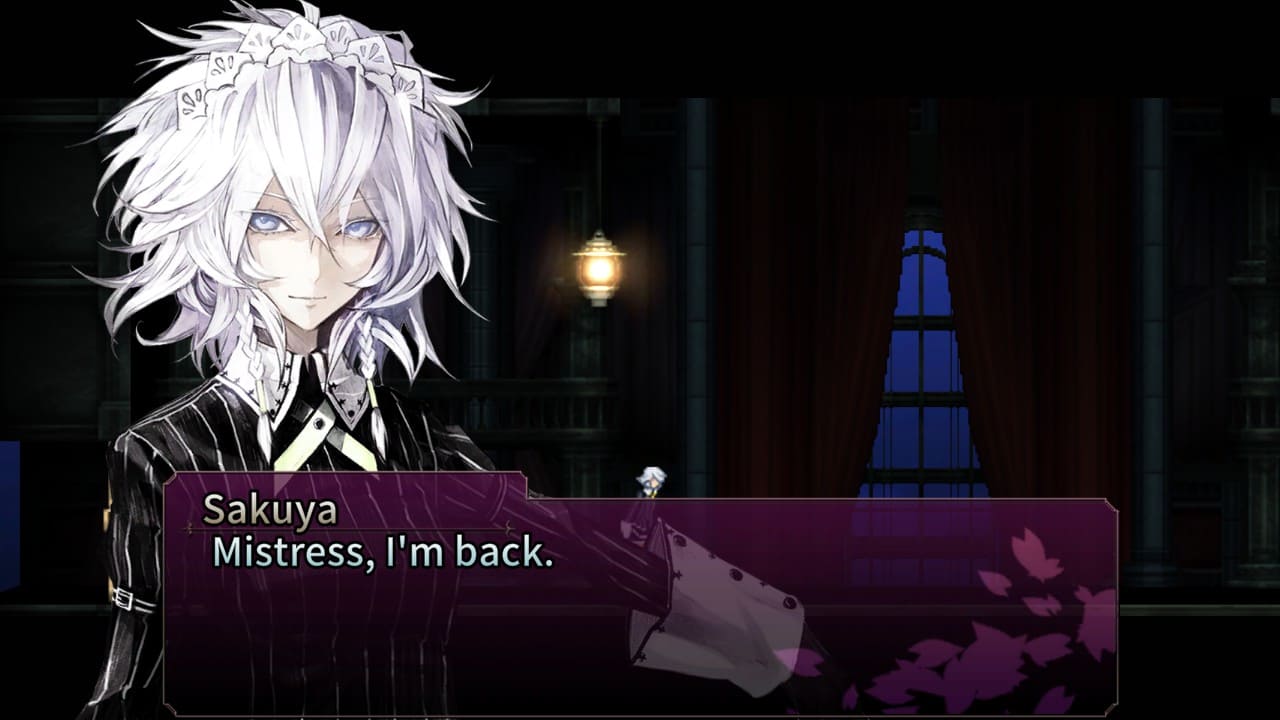
Sakuya announces her return with dedication and resolve.
Gameplay and Mechanics
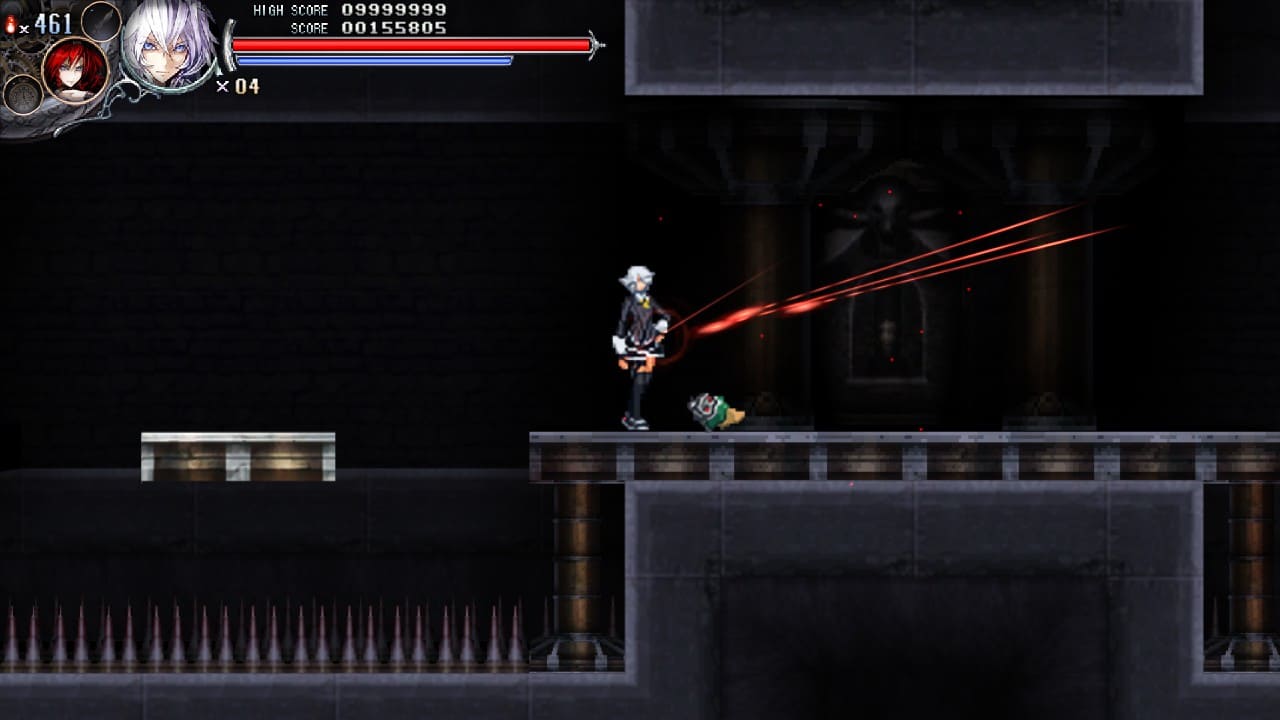
Sakuya channels her power to collect souls during intense combat.
Koumajou Densetsu II: Stranger’s Requiem stays true to the classic Castlevania formula while introducing new mechanics that add depth and strategy. The core gameplay loop revolves around exploring stages, defeating enemies, collecting resources, and conquering challenging bosses. Here’s a breakdown of the key gameplay elements:
- Stage Progression: Explore intricately designed stages filled with enemies, traps, and secrets, culminating in intense boss fights that push your skills to the limit.
- Combat and Resources: Defeat enemies to collect Souls, which serve as subweapon ammunition and other resources. Souls are collected from defeated enemies and environmental objects like candles. With a maximum carry limit of 999 Souls, managing this resource is essential for taking down tougher foes and unlocking hidden paths.
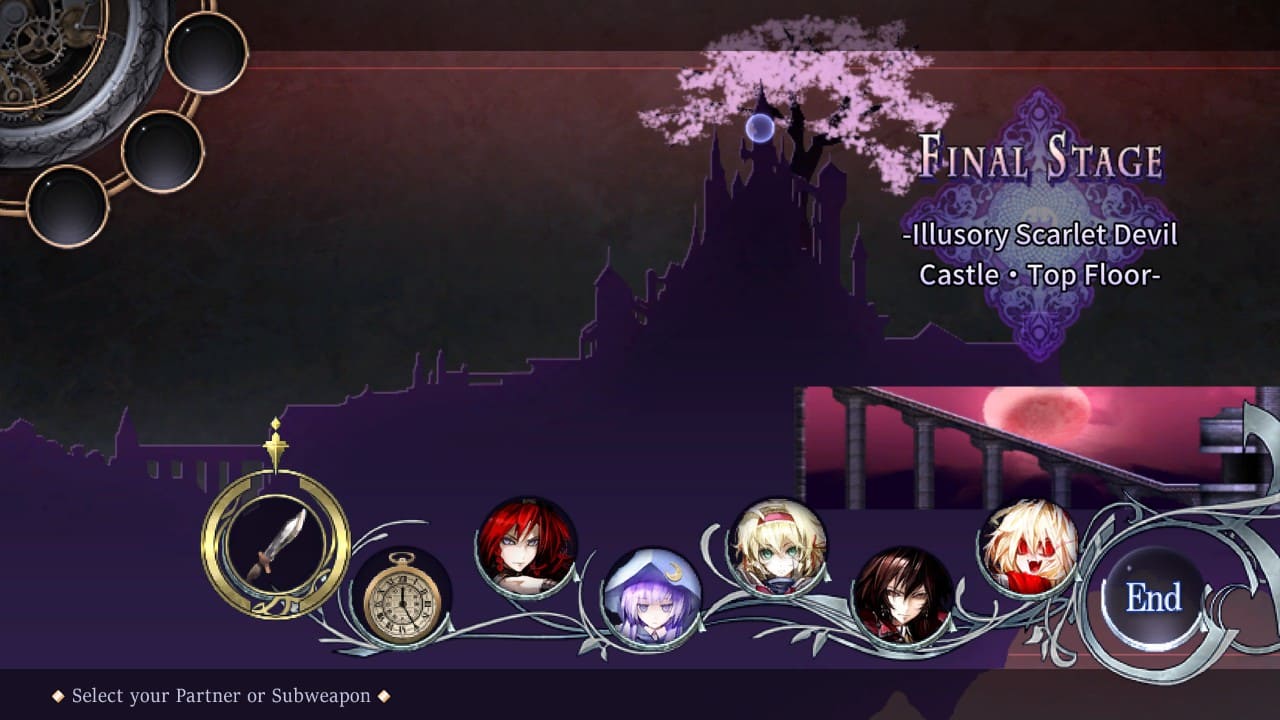
Review your subweapons and partners before the last battle.
MP System
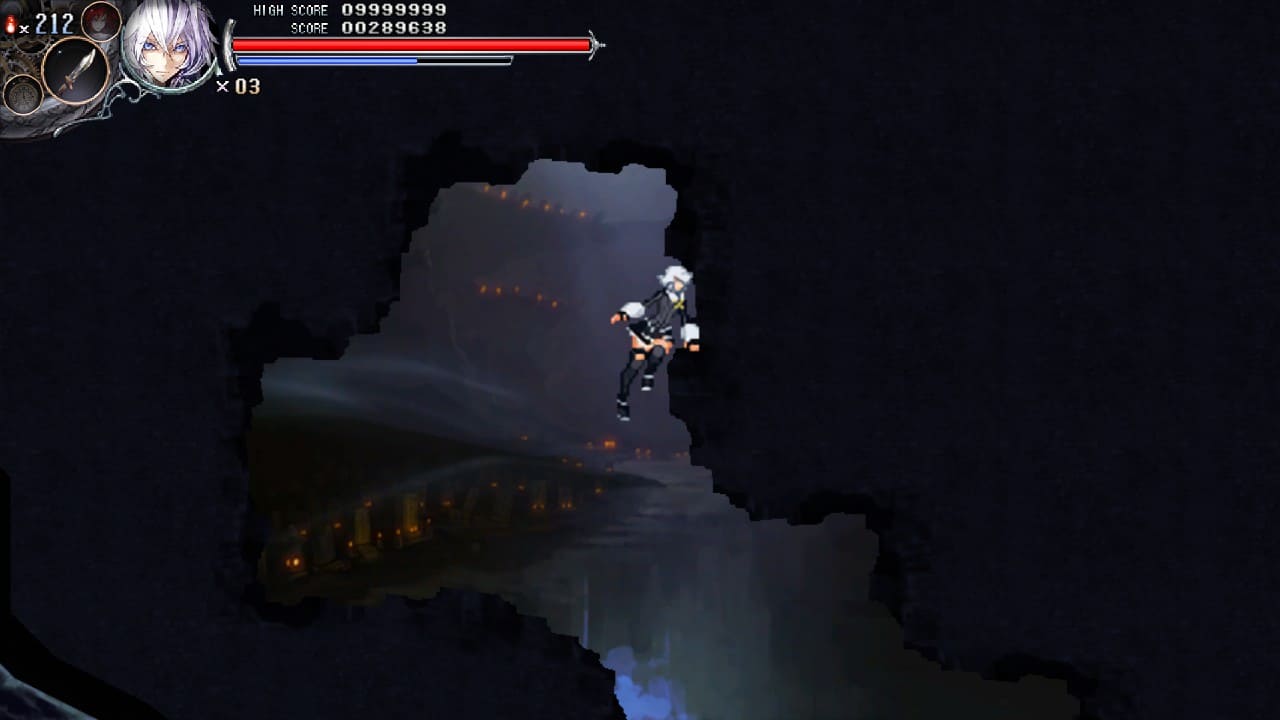
Utilize MP to perform tactical floating maneuvers in battle.
The introduction of an MP bar, located below your health, provides an additional layer of strategy. The MP bar is used to activate special abilities, such as flight, that offer new movement options. Here’s how it works:
- The MP bar depletes with each use of special abilities.
- Abilities can’t be used when the MP bar is too low until it regenerates.
- The MP bar regenerates over time when not in use, requiring careful timing and planning for when to deploy these abilities.
Boss Fights
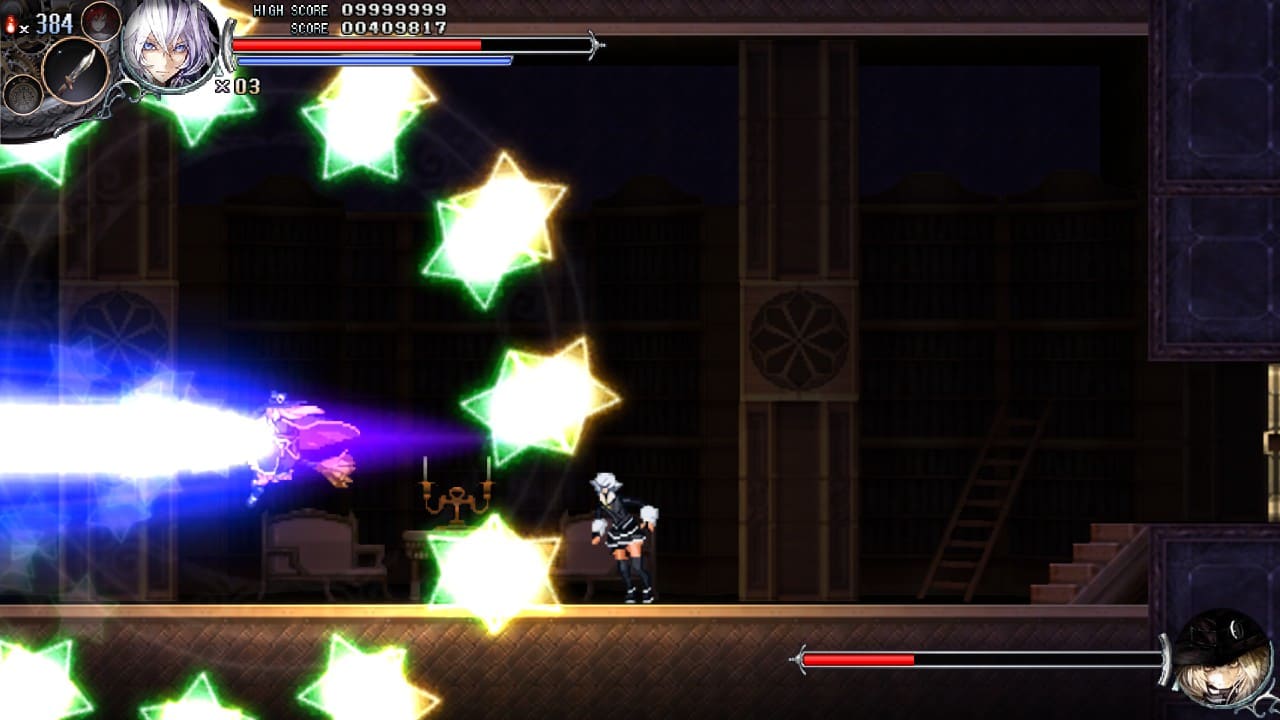
Marisa dominates the screen with chaotic bullet hell and a powerful energy blast.
The boss battles in Koumajou Densetsu II are a key highlight, incorporating complex, screen-filling bullet patterns that force players to continuously move and react. Timing and rhythm are essential as you dodge attacks while maintaining offensive pressure. Each boss fight presents new phases, with escalating difficulty and changing attack patterns, requiring you to adapt your strategy accordingly.
- Subweapon Usage: Managing Souls is crucial during these fights. The right subweapons can help clear large groups of projectiles, giving you breathing room to focus on avoiding damage while attacking the boss.
Checkpoint System and Difficulty
Koumajou Densetsu II uses a checkpoint system to maintain challenge while offering a balanced difficulty curve:
- Lives and Respawns: Lose a life, and you’ll restart from the most recent checkpoint, allowing you to quickly jump back into the action without losing significant progress.
- Soul Retention: Souls are retained upon respawn, but you’ll start with 50 if you have fewer than 50, maintaining resources without a complete reset.
- Game Over: If you lose all lives, you’ll start over from the checkpoint, preserving the tension and challenge throughout the game.
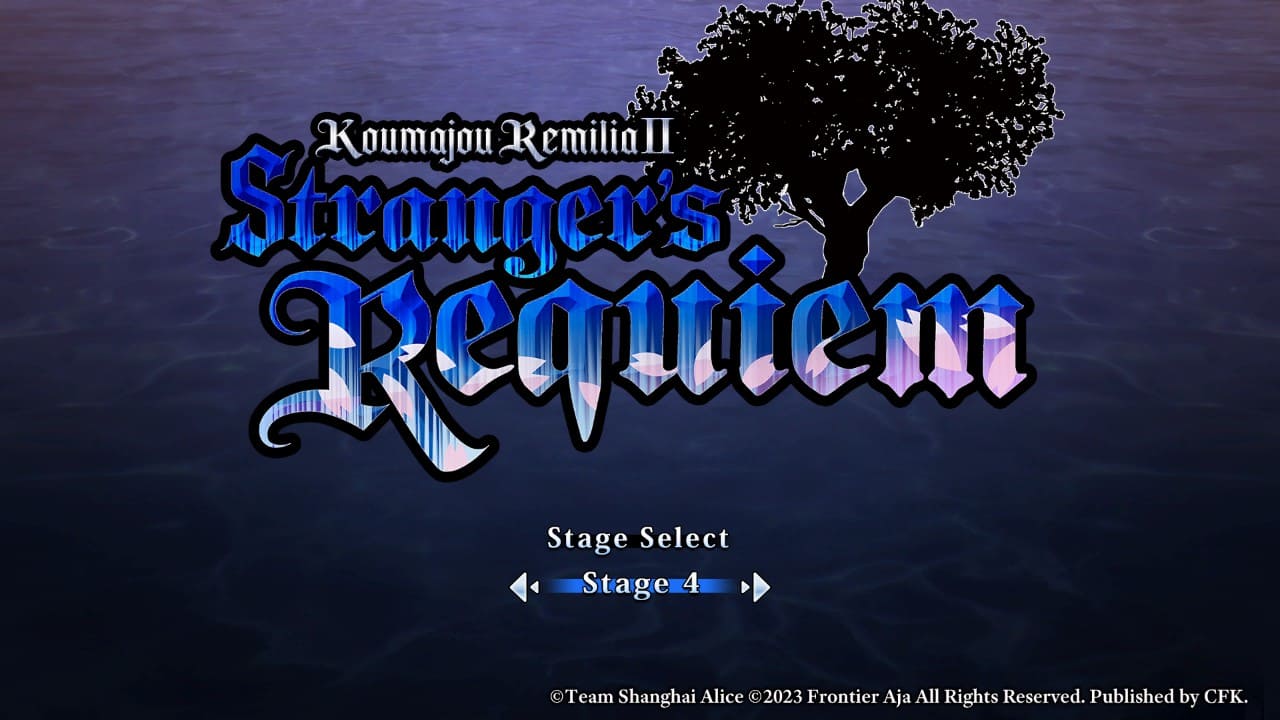
Use the Continue option to access stage select and revisit key moments.
Additionally, the Continue option lets you revisit stages you’ve already completed, either to improve your performance or explore hidden secrets:
- You can access any previously beaten stage, helping with exploration and progression.
- Jump directly to the next stage after clearing a level to continue your adventure without interruptions.
Unlockable Modes and Extra Content
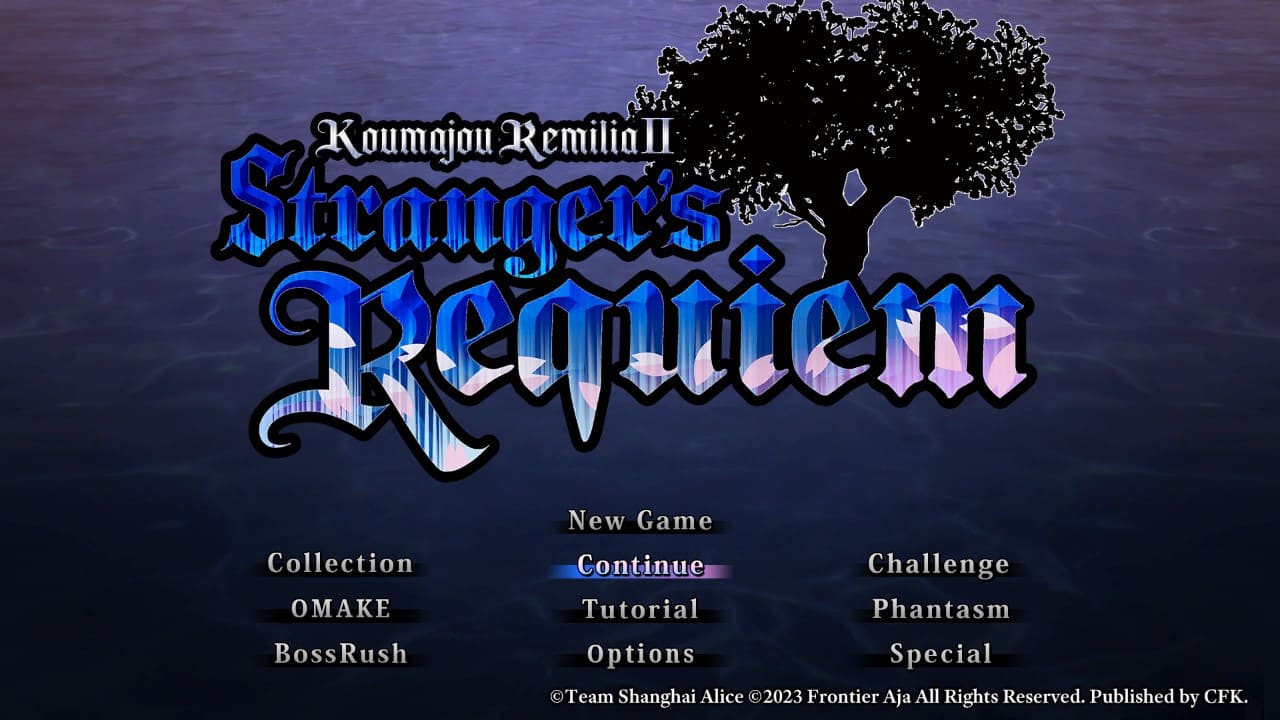
Clear the game to unlock extra challenges and modes like Phantasm and Boss Rush.
One of the standout features of Koumajou Densetsu II is the variety of unlockable modes that enhance replayability and offer fresh challenges. After completing the main game, you’ll unlock several modes, each providing new experiences and incentives to keep playing:
- Omake Mode: Features additional challenges that provide a fun change of pace, introducing new ways to play through the game’s stages.
- Phantasm Mode: Adds more replay value with tougher enemies, alternate paths, and additional unlockables.
- Boss Rush Mode: Take on all the game’s bosses in a continuous series, testing your combat skills in one go.
- Special: Experience the game from a different perspective, with unique narrative elements and challenges tied to the new viewpoint.
These modes offer various ways to revisit the game with different gameplay elements, enhancing replayability and giving players new objectives to pursue after completing the main story.
Art & Audio
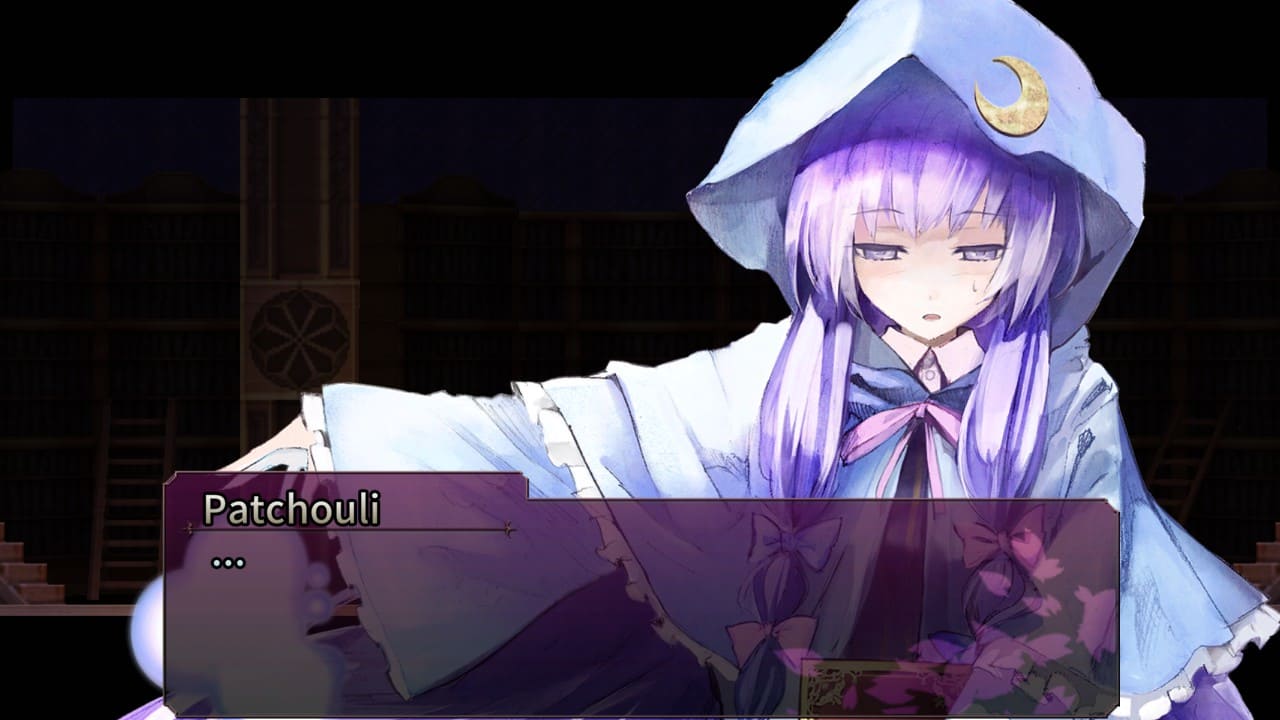
Patchouli’s signature calm intensity captured in detailed portrait art.
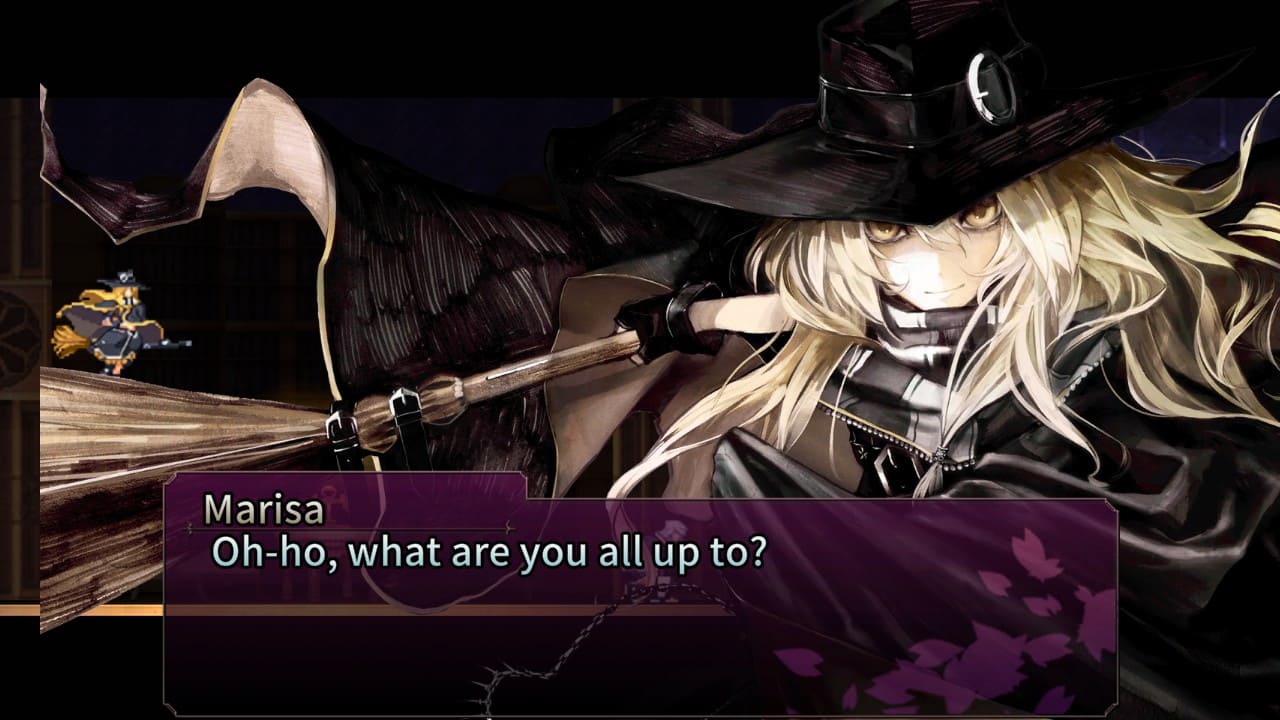
Marisa’s mischievous charm shines through in every sharp line and smirk.
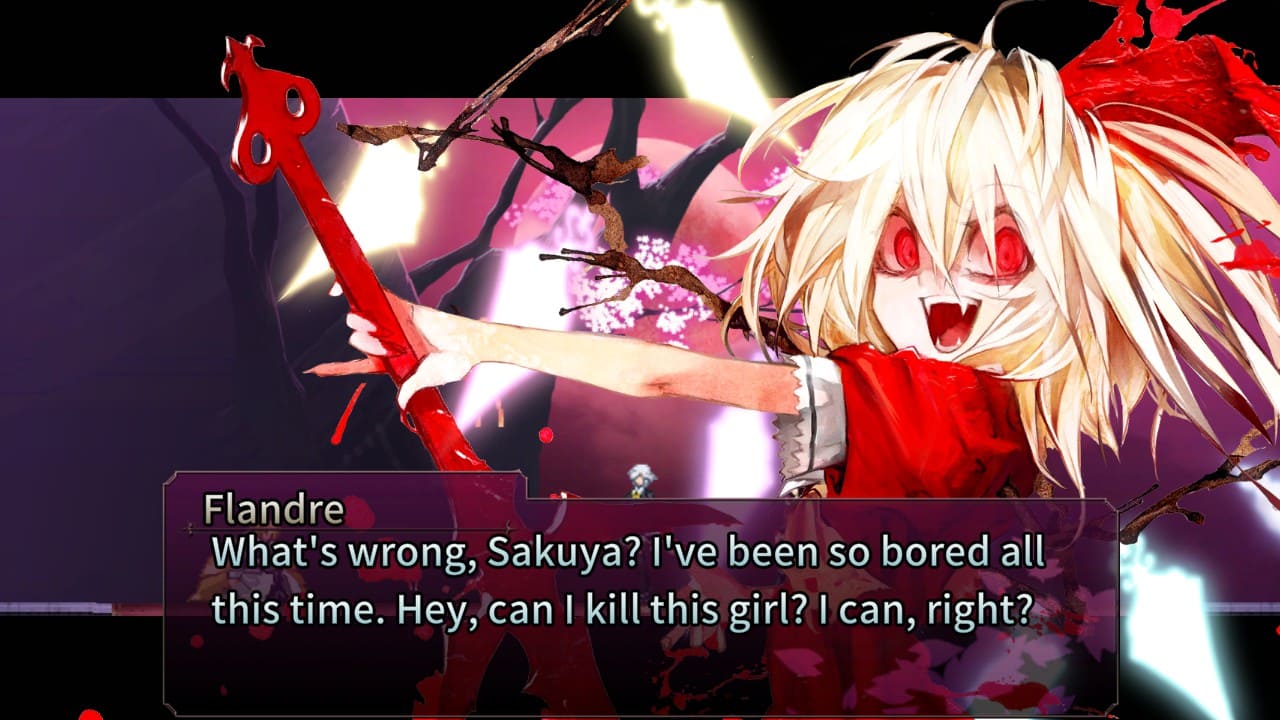
Flandre’s reimagined design adds a chilling edge to her already chaotic energy.
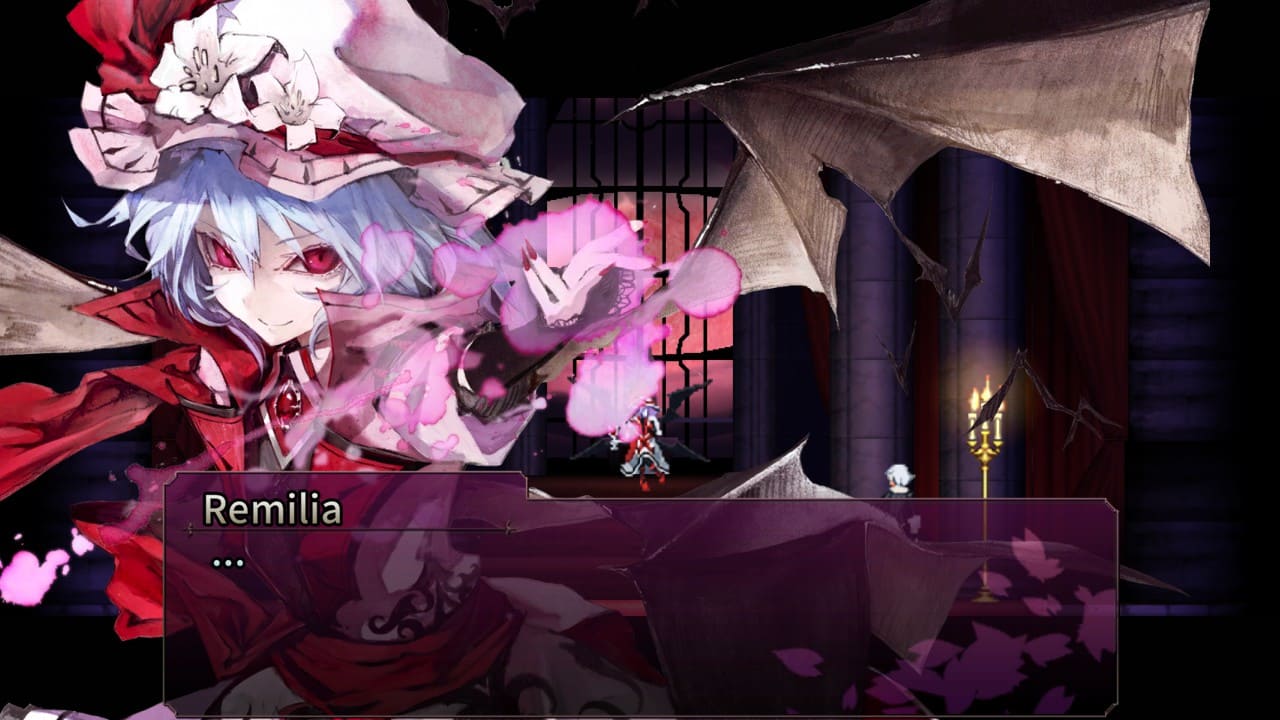
Remilia says nothing—but her eyes speak volumes.
Banpai Akira’s art continues to shine in Stranger’s Requiem, particularly in character design. The characters are brought to life with intricate pixel art, elevating the visual quality of the game. The portrait art for the cutscenes is nothing short of stunning, especially with Akira’s attention to detail. Sakuya and Flandre’s designs stand out, with Flandre taking on a more intense, yandere persona compared to her previous iteration.
The game’s pixel art, particularly in character animations, could be described as fluid but with some noticeable disparity between the quality of regular enemies and boss animations. The bosses are impressively well-polished, while the regular enemies suffer from a slight blur, making their movements feel less dynamic. However, this issue doesn’t detract from the overall impact of the game’s visuals, especially during boss encounters.
The background art for stages is exceptionally well done. The environments, such as misty forests, decaying castles, and ominous chambers, are rich in detail and perfectly match the game’s dark, gothic atmosphere. The lighting and color palette work in tandem to create a moody world that feels both expansive and suffocating.
As for the music, Eiichiro Yanagi’s compositions enhance the atmosphere, with “Afraid” standing out as a haunting introduction. The soundtrack complements the game’s pacing and intensity, heightening the feeling of dread during boss fights and exploration alike.
Unique Features and Mechanics
Koumajou Densetsu II: Stranger’s Requiem introduces Bullet Hell Boss Mechanics, a standout feature that enhances the game’s boss battles. Unlike traditional encounters, these multi-phase fights involve intricate bullet patterns that challenge the player’s reflexes and timing.
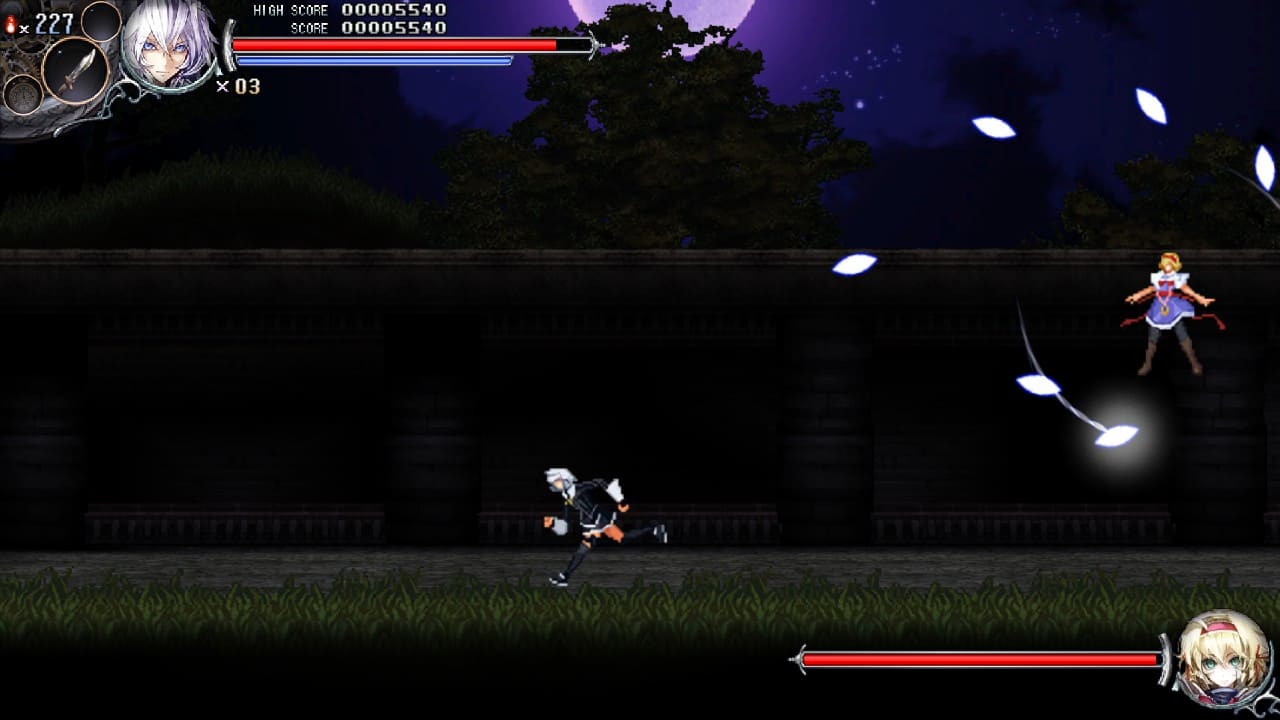
Sakuya faces off against Alice amid a flurry of icy bullet patterns.
Each boss utilizes unique projectile patterns, evolving in complexity as the battle progresses. Players must carefully dodge fast-moving streams of bullets while seizing moments to strike.
Key Features:
- Dynamic Bullet Patterns that change throughout the battle
- Increasing Difficulty with new patterns emerging as the boss’s health depletes
- Visual and Audio Cues that help players navigate the chaos, balancing challenge with clarity
This mechanic adds depth to the gameplay, blending traditional action with bullet hell elements for a fresh and challenging experience.
Seiyuu Performances
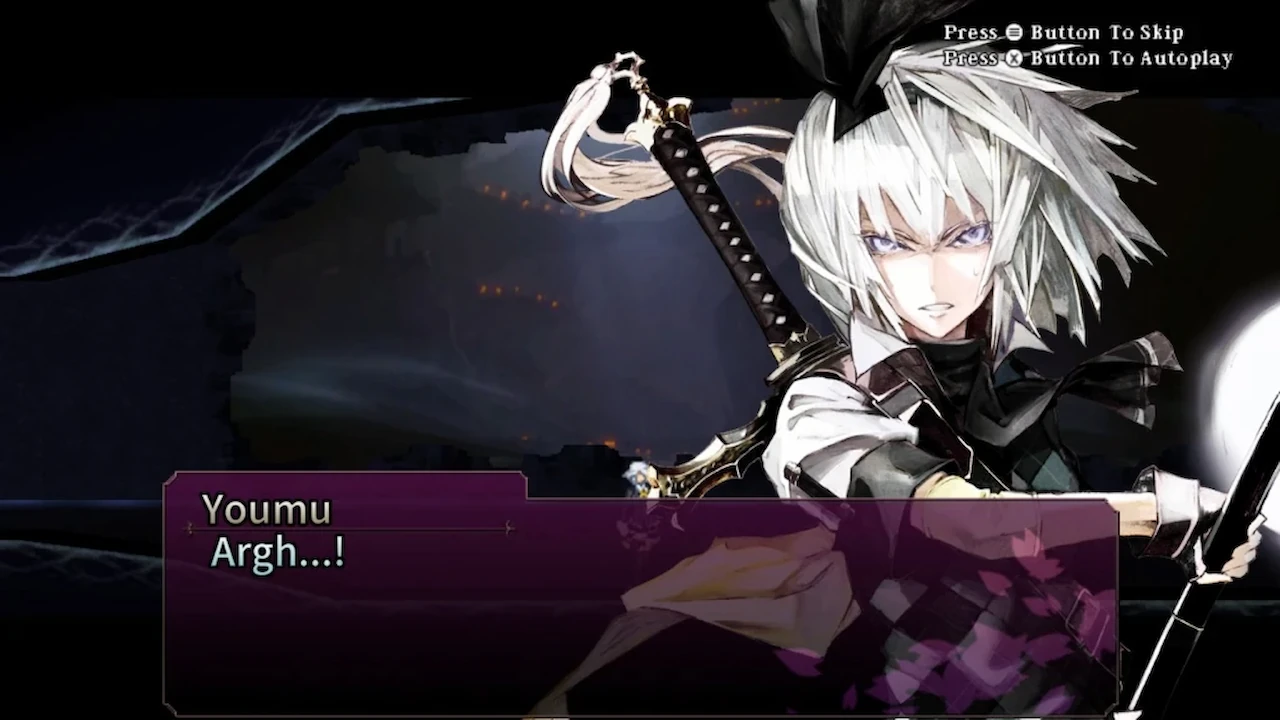
Youmu winces in pain as tension rises in the unfolding conflict.
Koumajou Densetsu II: Stranger’s Requiem features a stellar lineup of voice talent that adds depth to the game’s gothic atmosphere. The seiyuu breathe life into the characters, making their personalities and emotions stand out, whether they’re in the midst of intense battles or in quieter, more introspective moments. Below are some of the standout performances from the cast:
- Miyuki Sawashiro
- Known for Celty Sturluson from Durarara!!, Mordred from Fate, Kurapika from Hunter x Hunter
- Eri Kitamura
- Known for Juri Han from Street Fighter, Sayaka Miki from Madoka Magica, Homura from Senran Kagura
- Y? Kobayashi
- Known for Lucina from Fire Emblem, Enkidu from Fate, Ruka Urushibara from Steins;Gate
- Aya End?
- Known for Virginia from Unicorn Overlord, Chihiro Fushimi from Persona 3, Leanne from Resonance of Fate
- Hisako Kanemoto
- Known for Djeeta from Grandblue Fantasy, Ami Mizuno/Sailor Mercury from Sailor Moon Crystal, Tomoe Gozen & Helena Blavatsky from Fate
- Hekiru Shiina
- Known for Celestia Ludgenberg from Danganronpa, Tsubomi Haruno from Gal*Gun, Ami Chouno from Girls und Panzer
Verdict
Koumajou Densetsu II: Stranger’s Requiem offers an engaging experience for fans of both Touhou and classicvania-style games. The difficulty on Hard provides the real Touhou experience, making it a true challenge for players looking for an intense, high-skill run. For those more interested in enjoying the art and music, there are plenty of difficulty options to suit different skill levels, ensuring accessibility without compromising enjoyment.
A significant draw to the game is the high replay value, with a variety of unlockable modes adding depth. However, while these features are impressive, the game does fall short in some areas. The regular enemies lack polish, which detracts from the otherwise strong presentation. Additionally, Koumajou Densetsu II doesn’t do much to differentiate itself from other classicvania titles, making it feel familiar but not entirely unique.
TLDR
Koumajou Densetsu II: Stranger’s Requiem (PC)
7
Decent
Summary: Koumajou Densetsu II: Stranger’s Requiem offers a challenging experience for Touhou fans, with impressive art, music, and a variety of unlockable modes for replayability. However, despite its strengths, the game struggles with a lack of polish on regular enemies and doesn’t differentiate itself enough from classicvania titles.
While the game’s core mechanics and aesthetics make it enjoyable, it ultimately falls short of reaching its full potential.
References
- Official, C. (2013, December 13). Nintendo Switch, Steam?Koumajou Remilia ?: Stranger’s Requiem?Official Launch Trailer. YouTube.
- Yanagi, E. (2018, May 10). Afraid. YouTube.


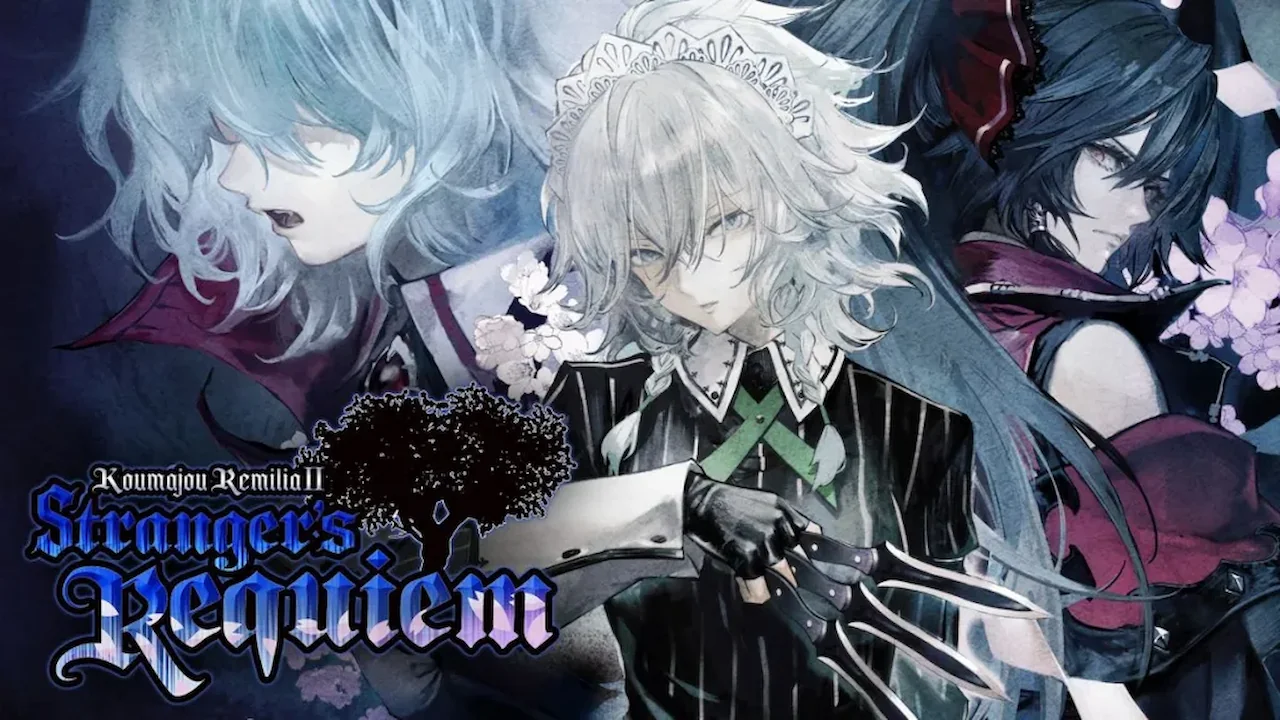
Leave a Reply